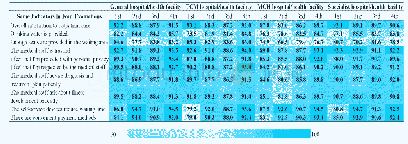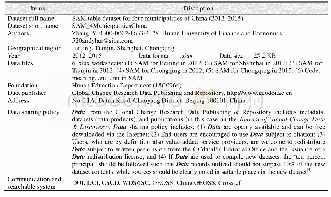《Table 2 Four types of social groups qualified for public rental housing》
 提示:宽带有限、当前游客访问压缩模式
提示:宽带有限、当前游客访问压缩模式
本系列图表出处文件名:随高清版一同展现
《"Poverty Decentralization or Reconcentration: An Empirical Study of the Effects of Collected Public Rental Housing in Changzhou, Jiangsu Province"》
Source:Drawn based on field research and interviews.
The collected houses are distributed among 120 communities,with an average of 27.1 sets per community,and the total stock does not exceed 200,even in the community with the most available houses.Different from large-scale new social housing communities,which have a few hundred to more than a thousand sets of housing(Song,2011;Lu and Pang,2013;Liu and Xing,2013),the collected houses are featured by a decentralized and balanced spatial distribution(see Figure 3).And 95.0%of the rental houses are located in 67 communities of eight Jiedaos(the area under the jurisdiction of Jiedao/SubDistrict Office)in the old city,mainly located in old communities(see Figure 4&Table 1).After two to three decades of population mobility and housing transactions,these communities accommodate various social groups(Ta,Chai,and Liu,2012).The diversity of neighbors is higher than that in public rental housing communities comprising a single social class.In addition,the old communities and the neighboring commercial housing are always mixed with each other,which,to a certain extent,achieve a decentralized resettlement of the poorat the urban scale,and have prevented the excessive concentration of low-income families in outer suburbs.
| 图表编号 | XD0012620300 严禁用于非法目的 |
|---|---|
| 绘制时间 | 2018.06.01 |
| 作者 | Sun Jie、Zhu Xigang、Song Weixuan、Liu Fengbao、Li Min |
| 绘制单位 | School of Architecture and Urban Planning,Nanjing University、Urban Planning Society of China、School of Architecture and Urban Planning, Nanjing University、Nanjing Institute of Geography and Limnology,Chinese Academy of Sciences、School of Architecture and |
| 更多格式 | 高清、无水印(增值服务) |
查看“Table 2 Four types of social groups qualified for public rental housing”的人还看了
-

- Table 4 Outpatient satisfactions in four rounds of evaluations in different types of public tertiary hospitals 2016—2019





